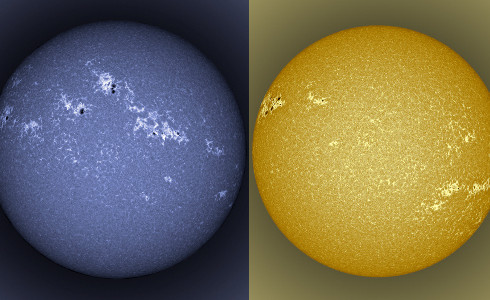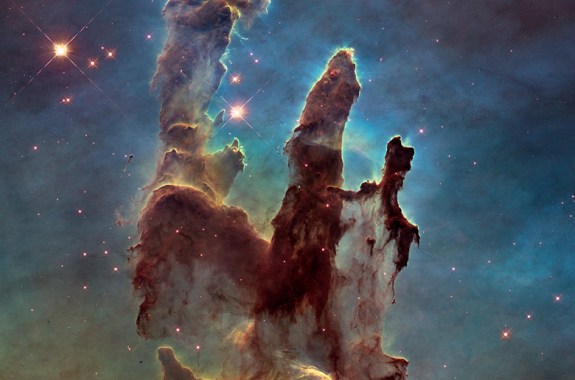Make a UV Detector
On a bright, sunny day, use tonic water to detect ultraviolet (UV) light from the Sun in this DIY Sun Science Activity from Lawrence Hall of Science.
#ExplainTheSun
What does the Sun do? Tell us, using the hashtag
#ExplainTheSun
What Does The Sun Do? Solar Experts Respond
Experts with a vested solar interest weigh in on the sun’s various starring roles.
19:22
The Most Unusual Laboratory (Not) on Earth
Floating 200 miles above the Earth, and speeding at nearly five miles per second, the International Space Station may be the most unusual lab available to science.
10:50
Dreaming Up the Future of Interstellar Travel
Could solar sails, antimatter propulsion, and air-breathing rockets take us to Mars and other galaxies in the future?
18:58
A New Era for NASA? Charles Bolden Leads the Way
NASA Administrator Charles Bolden discusses the agency’s priorities, from understanding conditions on Earth to reaching Mars.
Pillars of Creation, 2.0
Two new versions of the iconic Hubble image commemorate the space telescope’s 25th anniversary.
11:44
New Climate Polls, A Comet Mystery, and Puppy Love
Rachel Feltman of the Washington Post gives us her rundown of the week’s science stories.
12:17
3D-Printed Coffee Cups Help Liquids Defy Gravity
The cups work using capillary action: Simply press your lips to the rim, and you get a sip, whether you want one or not.
12:09
News Roundup: The Birth of the Moon, E.T. Life, and LHC Season Two
Washington Post science blogger Rachel Feltman gives us her top stories this week, and the BBC’s Jonathan Webb tells us what to expect from the revved-up particle collider.


